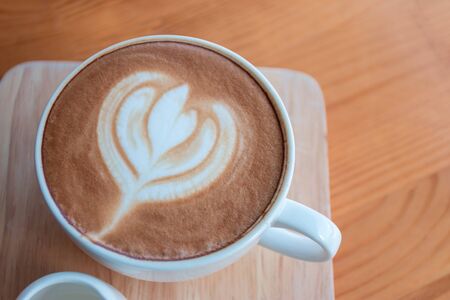Waking Up to the Espresso Ritual
If you find yourself strolling through an Italian city in the early morning, youll quickly notice a special rhythm to daily life. Unlike the slow-drip coffee mornings many Americans enjoy at home or with to-go cups, Italians kick-start their day at the local coffee bar. This is not just about grabbing caffeine; its a cherished social ritual.
The Morning Scene at an Italian Coffee Bar
As soon as the doors open, locals step inside—some dressed for work, others still in casual clothes—all heading straight for the counter. The barista greets them with a friendly “Buongiorno!” and within seconds, the espresso machine hisses to life. Everything moves fast here. There’s no waiting around for a big latte; it’s all about the tiny but powerful shot of espresso.
Why Espresso?
| Espresso Culture | American Coffee Culture |
|---|---|
| Small, strong shot | Large cup, milder taste |
| Drunk quickly at the bar | Sipped slowly, often on-the-go or at home |
| Social interaction at the counter | More solitary or takeout-focused |
The Social Rituals
Ordering is quick and simple—just ask for “un caffè,” which always means an espresso unless you specify otherwise. People stand at the bar, exchange greetings with neighbors or chat briefly with the barista, then savor their espresso in just a few sips. It’s common to pair your coffee with a sweet pastry like a cornetto, but lingering is rare; most are in and out within five minutes.
Key Morning Customs at an Italian Coffee Bar:
- No takeout cups—espresso is meant to be enjoyed right there.
- Standing at the bar is standard; sitting usually costs extra.
- Pay after finishing your coffee—just tell the cashier what you had.
- The focus is on quality over quantity: one perfect espresso to start your day.
This unique blend of speed, flavor, and social connection defines the way Italians greet each new morning—one little cup at a time.
2. The Heartbeat of the Neighborhood
Step into any Italian coffee bar and you’ll quickly notice it’s much more than just a spot to grab an espresso. These bars are the true heartbeat of the neighborhood, where life unfolds from morning until night. Locals gather not only for their daily caffeine fix but also to connect, chat, and keep up with what’s happening in their community.
More Than Coffee: The Social Scene
Unlike the typical American coffee shop, where many might sit alone with laptops or headphones, Italian coffee bars buzz with conversation and laughter. It’s a place where neighbors bump into each other, friends plan to meet up, and even local business owners discuss deals over a quick cappuccino. The barista often knows everyone by name, remembering their regular orders and catching up on family news.
What Happens at the Coffee Bar?
| Time of Day | Main Activities |
|---|---|
| Morning | Locals kick off their day with espresso shots, share neighborhood news, and exchange greetings before work. |
| Midday | Quick meetings over coffee and pastries, small talk about sports or weather, short breaks from work or errands. |
| Afternoon | Regulars return for another pick-me-up, students drop in after school, casual conversations continue. |
| Evening | The pace slows down; people unwind after work, sometimes sharing a sweet treat or catching up with friends. |
A Place Where Everyone Belongs
The Italian coffee bar isn’t exclusive—it welcomes everyone from retirees to young professionals, families to solo visitors. It’s common to see someone reading a newspaper at the counter while others chat nearby. No one is rushed; the focus is on enjoying the moment together. This daily ritual creates strong bonds among locals and makes everyone feel like they’re part of something bigger than themselves.
So next time you walk past an Italian coffee bar, remember it’s not just about the coffee—it’s about community, connection, and being at the center of neighborhood life.
![]()
3. The Art of Coffee: Behind the Counter
Step up to the counter of an Italian coffee bar, and you’ll notice that it’s more than just a place to grab a quick espresso. Here, the barista is both artist and conductor, orchestrating the flow of drinks and people with practiced skill. Every movement behind the counter is purposeful—from pulling the perfect shot of espresso to the rhythmic clatter of porcelain cups hitting saucers.
The Barista’s Craft
In Italy, making coffee is a craft honed over years. It’s not just about pressing a button on a machine; it’s about knowing exactly how long to let the water run through the grounds, how tightly to pack the coffee, and when to stop for that rich crema on top. The baristas move quickly but never rush. Their actions are almost like a dance—measured, efficient, and always with an eye on quality.
Roles at the Bar
| Role | Main Tasks | Unique Etiquette |
|---|---|---|
| Barista | Prepares coffee drinks, manages the espresso machine | Remembers regulars’ orders, keeps a lively pace, greets everyone |
| Cashier | Takes payments before you order at the counter | No tipping expected; pay first, then approach the barista with your receipt |
| Customer | Orders at the bar, stands while drinking (unless paying extra for table service) | Quick greetings, brief conversation; finish your drink in just a few minutes |
Coffee Bar Etiquette
The etiquette in an Italian coffee bar is distinct from what most Americans might expect. There’s no waiting in line for your name to be called or lingering over laptops. Instead, you pay at the register first, then hand your receipt to the barista who makes your drink on the spot. Most people stand at the bar and enjoy their espresso quickly—often in less than five minutes—before heading out to continue their day.
Sensory Experience: Sounds and Sights
The environment is alive with sound—the hiss of steam from milk frothing wands, spoons clinking against tiny cups, and rapid-fire exchanges between customers and staff. These noises become part of the daily ritual and add energy to the space. The porcelain cups are small but sturdy, designed for quick sipping rather than leisurely drinking.
Observing these rituals gives you a window into Italian culture: efficient yet social, focused on quality without fussiness. Each visit becomes a shared experience—a brief but meaningful pause in the rhythm of daily life.
4. Traditions and Treats: Pastries and Pairings
Step into any Italian coffee bar and you’ll find that coffee is rarely enjoyed alone. Instead, it’s all about the art of pairing—matching just the right pastry to your favorite coffee drink. This daily ritual isn’t just about taste; it’s a cultural tradition that brings a little extra joy to each cup.
Classic Italian Pastries
From morning to evening, there’s always something sweet (or savory) on offer at the bar. Here are some of the most popular pastries you’ll see locals enjoying with their coffee:
| Pastry | Description | Best Time to Enjoy |
|---|---|---|
| Cornetto | A soft, slightly sweet croissant—sometimes filled with jam, cream, or chocolate. | Breakfast |
| Brioche | A fluffy, buttery roll, often split and filled with gelato in summer. | Morning or Afternoon |
| Cannolo Siciliano | A crispy pastry shell filled with sweet ricotta cheese and candied fruit. | Afternoon treat |
| Pasticciotto | A shortcrust pastry filled with custard cream, typical from Southern Italy. | Morning or Snack Time |
| Torta della Nonna | A classic custard tart topped with pine nuts and powdered sugar. | Anytime! |
| Biscotti (Cantucci) | Crunchy almond cookies, perfect for dipping. | After Lunch or Dinner (with espresso) |
The Art of Pairing: Drinks & Treats by Time of Day
Italians have perfected the timing of their treats. The choice of both coffee and pastry changes throughout the day. Here’s how locals usually pair their favorites:
| Time of Day | Coffee Drink | Typical Pairing | Cultural Notes |
|---|---|---|---|
| Early Morning | Cappuccino or Caffè Latte | Cornetto or Brioche | No milky drinks after 11 am! |
| Mid-Morning Snack (Spuntino) | Espresso (Caffè) | Pasticciotto or Biscotti | A quick pick-me-up at the bar counter. |
| Afternoon Break (Merenda) | Macchiato or Shakerato (iced espresso) | Cannolo Siciliano or Torta della Nonna | Sweets balance out the bitter coffee notes. |
| After Lunch/Dinner (Digestivo) | Espresso (Short and strong) | Biscotti/Cantucci (often dipped in Vin Santo wine) | The classic way to end a meal in style. |
The Ritual Experience at the Bar Counter
The real magic happens when you order your coffee and pastry “al banco” (at the counter). Regulars stand shoulder-to-shoulder chatting with friends, savoring quick bites, and sipping their drinks—never rushed, but always efficient. It’s this blend of taste, tradition, and social connection that makes every visit to an Italian coffee bar a truly local experience.
5. From Morning Rush to Evening Wind-Down
In an Italian coffee bar, the rhythm of the day is as important as the espresso itself. Let’s take a closer look at how these spots transform from sunrise to sunset, and how the daily rituals of both baristas and customers evolve with each passing hour.
The Early Morning Buzz
The day kicks off with a burst of energy. Locals stream in for their first shot of espresso or cappuccino—always standing at the counter for a quick pick-me-up before heading to work or school. The air is filled with greetings, clinking cups, and the hiss of steaming milk. This is the busiest time, with regulars chatting briefly with the barista, sharing local news or simply exchanging a smile.
Mid-Morning Slowdown
After the initial rush, things calm down. Now, you’ll find people enjoying a slower pace—perhaps an elderly neighbor reading the newspaper, or friends catching up over a sweet pastry and a second coffee. The atmosphere is lighter, more relaxed. Some might grab a “macchiato” or “caffè lungo,” savoring their drinks rather than gulping them down.
Lunchtime and Afternoon Changes
As lunchtime approaches, business picks up again. Office workers stop by for a quick sandwich or panini along with their coffee. In the afternoon, especially around 3 or 4 pm, families and students drop in for a treat—think gelato or hot chocolate in winter, espresso all year round. The vibe is social but less frantic than in the morning.
Atmosphere and Rituals Throughout the Day
| Time of Day | Atmosphere | Customer Rituals |
|---|---|---|
| Morning (7-10 am) | Lively, crowded | Quick espresso at counter, pastries on-the-go |
| Late Morning (10-12 pm) | Calmer, cozy | Sit-down coffees, light conversations |
| Lunchtime (12-2 pm) | Bustling again | Coffee with sandwiches or snacks |
| Afternoon (2-5 pm) | Relaxed, friendly | Sweets with coffee, longer chats |
| Evening (5-8 pm) | Chill, winding down | Aperitivo time: coffee gives way to cocktails and small bites |
The Evening Transition
By early evening, things start to slow down. Locals might return for an “aperitivo”—a pre-dinner drink that could be a spritz or wine served alongside small snacks. The focus shifts from coffee to relaxing and socializing after a long day. The bar becomes a place to unwind; some may still order an espresso after dinner as a classic Italian ritual.
This gentle transition from morning rush to evening wind-down shows how Italian coffee bars are woven into everyday life—a place where routines shift but community remains at the heart of it all.


